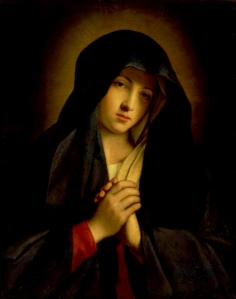
"The Madonna in Sorrow" (Image: Wikimedia Commons)
Among doctrinal issues dividing Protestants and Catholics is the issue of Mary’s virginity following the birth of Jesus. Catholics maintain that Mary remained a virgin throughout her life. Most Protestants on the other hand maintain that Mary remained a virgin until after the birth of Jesus, at which point she had children with Joseph. Interestingly enough, Luther, Calvin, and Zwingli at various times all professed Mary as “ever-virgin” [1]. Setting aside the Protestant-Catholic tendency to “talk over” one another instead of “talking with” one another, let’s consider the facts to see what we can uncover.
Certainly various biblical passages on the surface appear to support the concept that Mary had children with Joseph following the birth of Jesus. For example, in the Gospel of St. Matthew, we read: “Then Joseph being raised from sleep did as the angel of the Lord had bidden him, and took unto him his wife: And knew her not till she had brought forth her firstborn son: and he called his name Jesus” (Mt 1:24-25, KJV), “While He [Jesus] was speaking to the people, behold, His mother and His brethren stood outside asking to speak to Him” (Mt. 12:46, RSV-CE), and “Is not this the carpenter’s son? Is not His mother called Mary? And are not His brethren James and Joseph and Simon and Judas?” (Mt. 13:55, RSV-CE). Thus, on the surface, it certainly seems plausible, according to Sacred Scripture, that Jesus had half-siblings.
However, other passages seem to contradict the claim that Mary and Joseph had children together; instead supporting the notion of Mary as “ever-virgin.” Very telling is the conversation in the Gospel of St. Luke between the Angel Gabriel and Mary. Gabriel tells Mary, who is betrothed to Joseph, that, “you will conceive in your womb and bear a son, and you shall call His name Jesus” (Lk. 1:31, ESV). Critical to our understanding is Mary’s response, “How will this be, since I am a virgin?” (Lk. 1:34, ESV). This conversation only makes sense if Mary intended to remain a virgin following her marriage to Joseph. Otherwise, would not she have simply assumed, at least at first, that Gabriel meant Mary and Joseph would conceive the child about whom Gabriel spoke?
Further, in the Gospel of St. John, as Jesus is dying on the Cross, we read, “When Jesus saw His mother and the disciple whom He loved [John] standing nearby, He said to His mother, ‘Woman, behold your son!’ Then He said to the disciple, ‘Behold, your mother!’ And from that hour the disciple took her into his own home” (Jn. 19:26-27, ESV). If Mary had other children, why would Jesus entrust her to John instead of to one of His half-brothers? As the situation plays out, it indicates that Mary is widowed and that she does not have other children of her own to whom she can be entrusted.
With respect to Matthew 13:55, in Matthew 27:56, we learn that two of Jesus’ “brothers,” James and Joseph, are actually sons of a different Mary. Thus, we find direct scriptural evidence that not only are at least two of the “brothers” mentioned in Matthew 13:55 not brothers at all, but also that the term “brother” was used in a larger sense by the Evangelists than in our limited sense of the term to mean “siblings.” We shall return to this point shortly. We should note here, as Chacon and Burnham point out, “The ‘brothers’ of Jesus are never called ‘sons of Mary.’ Jesus is often called the son of Mary, but never a son of Mary as if He had siblings.”[2]
However, first let’s consider the meaning of “till” and “firstborn” in Matthew 1:25. “Till,” meaning “until,” does not necessarily mean at a certain point one condition of being is exchanged for another condition of being. Consider for example 1 Corinthians 15:25: “For He [Christ] must reign until He has put all His enemies under His feet.” This certainly does not mean that after Christ puts all His enemies under His feet, He will no longer reign, for we know Christ reigns forever: “He will be great and will be called the Son of the Most High. And the Lord God will give Him the throne of His father David, and He will reign over the house of Jacob forever, and of His kingdom there will be no end” (Lk. 1:32-33, ESV). Thus, we cannot say with certainty in reference to Matthew 1:25 that Joseph did not have sexual relations with Mary until after the birth of Jesus, but only that he did not do so before the birth of Jesus.
“Firstborn” is another critical term for proper understanding. It is a legalistic term conveying status and does not mean “first one of others.”[3] We see examples of this legalistic use of “firstborn” in Psalm 89:28 and Exodus 34:20. Even if a woman had only one child, that child still ranked in legal terms as “firstborn.” The term “firstborn” in itself tells us nothing in regards a woman having more than one child. As St. Jerome notes, “Every only child is a firstborn child; but not every firstborn is an only child. A firstborn child is not only one after whom other children are also born, but also one before whom no other child is born.”[4] In fact, St. Paul gives us a fuller meaning of the term as applied to Christ when he calls Jesus “the firstborn of all creation” (Col. 1:15, ESV).
So, if the “brothers” of Jesus are not actually His half-brothers, who are they? Many Catholics will argue the “brothers of Jesus” were merely cousins. As Matthew 27:56 indicates, this could certainly be the case. It is true that Aramaic had no distinct term for “cousin,” so that “brother” was often used in a larger sense.[5] In fact, Jerome in his tract, On the Perpetual Virginity of the Blessed Mary against Helvidius, written about AD 383, argues precisely that the “brothers” were actually cousins.[6] Similarly, many of the early Church Fathers, including Origen, St. Athanasius of Alexandria, Pope St. Siricius I, St. Ambrose, and St. Augustine, held strongly to the assertion that Mary was ever-virgin.[7]
Another source presents the earliest tradition explicitly portraying Mary as ever-virgin. The Protoevangelium of James (circa AD 150) “contains the oldest extant account of the miraculous birth, and of the infancy and youth of the Virgin Mary.”[8] This work claims Mary’s parents, Joachim and Anna, consecrated Mary as a perpetual virgin at the Temple. Later, Mary was betrothed to Joseph, an older widowed man with children, as something akin to a guardian. While non-canonical, the Protoevangelium of James should not simply be dismissed out-of-hand. As demonstrated above, Sacred Scripture cannot be shown to authoritatively indicate Mary and Joseph had other children (in fact, the evidence indicates the contrary). Thus, as a historical document, the Protoevangelium of James offers a plausible explanation for Mary’s ever-virgin state and accounts for the presence of Jesus’ “brothers” – in this explanation, step-brothers.[9]
Finally, even if we set everything else aside, let’s consider Mary as the Mother of God – and all this phrase implies. In this sense, her womb in a very real way became the vessel through which God made present in history the Mystery of the Incarnation. Through her physical body, God worked the Mystery of Christianity: God taking on human flesh and walking among men. Even if we grant that Mary and Joseph didn’t fully understand the Mystery of the Incarnation and the identity of Jesus (which seems unlikely), they still nevertheless understood God had wrought something beyond human understanding through the womb of Mary. If we let the full implications of this sink in, does it seem likely that either Mary or Joseph would have sought to defile with mere human relations that which had become something sacred? Given what we know about Mary and Joseph from the testimony of Sacred Scripture, does it really seem likely, to put it bluntly, that Joseph would say, “God is done, now it’s my turn”?
Long before any thought of a Protestant Reformation and long before the Great Schism of 1054, the Second Council of Constantinople in 553 declared as dogma the perpetual virginity of Blessed Mary.[10] For nearly one thousand years, no orthodox Christian questioned the truth of Mary as “ever-virgin.”
Even if one rejects the authority of the Second Council of Constantinople, simply considering the weight of the evidence above strongly indicates Mary remained ever-virgin. At the very least, the above arguments demonstrate that it is not unreasonable for a good Christian to hold to the position that Mary remained ever-virgin.
Notes
[1] Luther: “It is an article of faith that Mary is Mother of the Lord and still a virgin…Christ, we believe, came forth from a womb left perfectly intact.” Calvin: “There have been certain folk who have wished to suggest from this passage [Matthew 1:25] that the Virgin Mary had other children than the Son of God, and that Joseph had then dwelt with her later; but what folly this is!” Zwingli: “I firmly believe that Mary, according to the words of the Gospel, as a pure Virgin brought forth for us the Son of God and in childbirth and after childbirth forever remained a pure, intact Virgin.” [All as quoted in: Chacon, Frank and Jim Burnham. Beginning Apologetics 6: How to Explain and Defend Mary. Farmington, NM: San Juan Catholic Seminars, 2001.]
[2] Chacon and Burnham, 16.
[3] Ibid., 16.
[4] As quoted in: Scott Hahn and Leon Suprenant, Jr., eds., Catholic for a Reason II: Scripture and the Mystery of the Mother of God, Second Edition (Steubenville, OH: Emmaus Road Publishing, 2004), 92.
[5] Jimmy Akin, The Fathers Know Best: Your Essential Guide to the Teachings of the Early Church Fathers (San Diego, CA: Catholic Answers, 2010), 348.
[6] Jerome, On the Perpetual Virginity of the Blessed Mary against Helvidius. From: Nicene and Post-Nicene Fathers, Second Series, Vol. 6. Edited by Philip Schaff and Henry Wace. (Buffalo, NY: Christian Literature Publishing Co., 1893.), online at: http://www.newadvent.org/fathers/3007.htm.
[7] Akin, 351-353.
[8] Johannes Quasten, Patrology, Volume I: The Beginnings of the Patristic Literature (Antwerp, Netherlands: Spectrum Publishers, 1966), 119.
[9] Ibid., 118-122.
[10] Kenneth Baker, Fundamentals of Catholicism, Volume II (San Francisco, CA: Ignatius Press, 1983), 354.
[© 2012 All rights reserved. This copyrighted material may not be reposted or reproduced in any form without permission.]
Read Full Post »
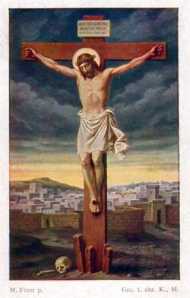
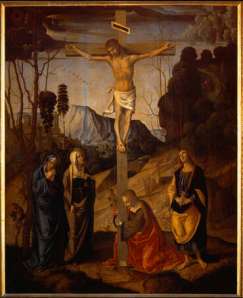

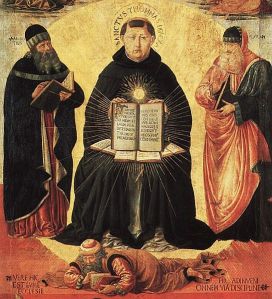


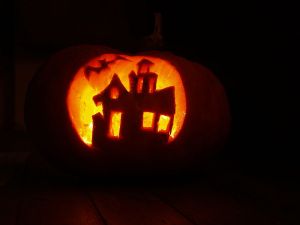


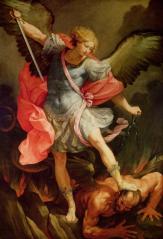
Book Review: Bringing the Gospel of Luke to Life
Posted in Book Review, tagged Bible, Catholic, Commentary, George Martin, Jesus, Luke, Scripture on November 13, 2012| Leave a Comment »
Bringing the Gospel of Luke to Life: Insight & Inspiration. By George Martin. Our Sunday Visitor, 2011. 697 pages, paperback. $24.95.
St. Jerome tells us that ignorance of Scripture is ignorance of Christ. St. John tells us: “In the beginning was the Word, and the Word was with God, and the Word was God” (Jn 1:1). To know God we must know His Word. As Christians, our Bible should never sit on the shelf gathering dust. Our Bible should be the most read book in our possession; it is most certainly the most important book in our possession. Yet, unfortunately many Christians remain personally ignorant of its contents. Many people set out with very good intentions to read the Bible, but often get only a few chapters or few books into it before giving up. They quickly become overwhelmed with unfamiliar people, places, and happenings. This is where a good Bible commentary comes in handy. It allows us to “walk along” with someone more familiar with the Bible as he leads us through it, helping us make sense of what was once terra incognita.
George Martin’s book, Bringing the Gospel of Luke to Life, is exactly this sort of “walk along” with an expert. He takes us verse by verse through the Gospel of Luke, helping us better understand every word of the Evangelist. Each chapter of the book corresponds to the same chapter in Luke. We are presented with a brief “Orientation” which highlights key points of a group of passages. This is followed by “Preface” consisting of several verses of Luke along with Old Testament references and where applicable, New Testament parallels. Next is a verse by verse commentary on the verses in the “Preface.” The end of the book contains a brief essay situating Luke within the canon of Scripture.
Overall, this commentary is excellent and quite useful. However, there are a few minor critiques. First, the commentary uses the New American Bible with Revised New Testament and Revised Psalms text. The NAB is an “idea for idea” translation, meaning the translators attempt to capture the “essence” of the original passage. On the other hand the RSV-CE is a more “word for word” translation, meaning the translators attempted to preserve as best as possible the actual wording of the original passage. A translation like the NAB is sometimes easier to read, but since it’s the “essence” of the original, we are left with someone else’s interpretation of what the original author meant, not necessarily with what he actually wrote. The vast majority of serious Bible scholars rely on “word for word” translations. The second minor critique involves a lack of maps and charts/outlines. At least a basic map would have been helpful. Also, having a basic chart or outline of the Gospel would have been helpful as well. These minor criticisms aside, Bringing the Gospel of Luke to Life is an great commentary and “guided tour” of the Gospel of Luke.
This review was written as part of the Catholic book reviewer program from The Catholic Company. Visit The Catholic Company to find more information on Bringing the Gospel of Luke to Life . The Catholic Company is the best resource for all your family Advent activities and supplies this year, such as Advent wreaths and calendars for kids, as well as Christmas decorations such as nativity scene sets and religious Christmas gifts for the whole family.
Share this:
Read Full Post »